林鴻文藝術個展TIME THROUGH JOURNEY
展覽地點:駐紐約台北經濟文化辦事處1樓及2樓
展覽期間:2009年9月24日至2009年10月14日
TIME THROUGH JOURNEY
works by Hong-Wen LIN(林鴻文)
Sept. 24 – Oct. 14 ,2009
Dishman Art Museum October 30 and run through November 20, 2009. Lamar University .Texas. U.S.A
Taipei Cultural Center is pleased to present TIME THROUGH JOURNEY: Works by Hong-Wen LIN. Using the multiple media such as paintings, sculptures, installations work, LIN’s works reveal Zen’s inspiration. Of all the materials he uses, there is a persistent connection that pulls the forms together. The connections are more hidden than obvious- the “qi” -is a vital energy that inhabits natural and constructed forms. His forms reveal a hidden structure, an underlying current that flows between the various constituent parts. Whether they exist in two or three dimensions, or represent figures or abstract ideas, is less important than their ability to reveal internal energies, the “qi”.
“Qi” is a traditional concept and practice from ancient Chinese. Especially during shamans and sages who observed and felt the omnipresent spiritual animism. It is regarded as the energies within nature , the cosmos , and within the bodies of living creatures. He is an artist who practices through his art a way of non-being within being-whereby art becomes the signifier of energy, the “qi”, and the source of all knowledge.
This exhibition’s curator is Robert Morgan, an artist and critic in the United States. This April, he went to see Hong-Wen Lin’s studio in southern Taiwan. He mentions: ” Some of these forms were positioned vertically in space while others extended horizontally in relation to the ground. Upon occasion, a steel shaft is inserted into a stone as if to suggest that the forged steel is an extension of nature, the source from which the form arose. The shape of the stone plays an important role in the visual ascent of the steel shaft. The steel becomes a subtle organic variation of the stone.” Robert said, “Those sculptures and installations are the expression of “qi”.”
Robert said again, after seeing Lin’s works in his studio,” I was drawn to a comparison between the work of Hong-wen with work by the abstract expressionist painter and sculptor, Barnett Newman. Some years ago I remember seeing three sculptures made by Newman in the sixties, entitled Here I, Here II, and Here III, in which vertical shafts – either forged in bronze or steel – rise up from bases.” And “In each case, the vertical ascent becomes an indication of the surrounding space as if to suggest a marker, a spiritual presence in time, or an existential moment.” Robert also remarks.
The persistent ”qi“ in Hong-wen’s work is not only a signifier of something else, but an actual presence of his own journey through time; his ability to inhale and exert force when necessary, and to exhale and relax when necessary. As with all journeys on Earth made by human beings, the rhythm of the energy is knowing when and how to exert and how and when to relax, otherwise little of consequence will happen. This is the important message of the artist Hong-wen Lin.
About Artist Hong-wen Lin
Hong-wen Lin is now an permanent associate professor of Tainan Technology University in Taiwan , Adjunct professor of National Tainan Art University. He has participated in residencies in the Vermont Studio Center in 2003, a visiting professor to Maine college of Arts in 2003; residencies in Art Omi International Artists’ Colony Invited Artist, New York in 2004 ; Jury of the collection committee of Kaohsiung Museum of Fine Art, Jury of the Kaohsiung Award.
About Curator Robert Morgan
Robert C. Morgan is a writer, critic, curator, artist, and art historian, who holds a Master of Fine Arts from the University of Massachusetts, Amherst and a Ph.D. from New York University. He lives in New York City, where he teaches at the School of Visual Arts and at Pratt Institute. A frequent lecturer and traveler — especially in Asia — Morgan is the author of many books and monographs, including Art into Ideas: Essays on Conceptual Art (1996, Korean translation, 2007), The End of the Art Work (1998) and Vasarely (2004). He has authored catalogs on Chinese artists, including Zeng Fanzhi, Ye Yongqing, Cui Guotai, Wenda Gu, and Zhang Jian Jun, and is the New York Editor of Asian Art News. Robert Morgan has curated over 70 exhibitions in museums, galleries, and cultural spaces throughout the world, including the first New York exhibition of Hung Liu in 1989. His own work as an artist is represented by Björn Ressle Gallery in New York.
Taipei Culture Center
1 East 42nd St.,New York, NY 10017
l 212.697.6188 #2l www.tpecc.org
駐紐約台北文化中心將於9月24日展出台灣藝術家林鴻文個展,主題為「時光之旅(Journey Through Time)」,由紐約知名藝術評論及策展人Robert Morgan策劃。此次展出林鴻文的作品充分展現出其創作中濃厚的東方禪意,和萬物皆有靈的道學思想。媒材有油畫、鋼鐵雕塑和裝置藝術三類。他的作品具有準確並正確的創作型式,也充滿神祕色彩和多元的特質。無論用何種媒材,都有一種持久不間斷的力量將其作品型式凝聚組合在一起,這種擬聚的力量就是所謂的「氣」(qi),存在於大自然之中,存在於自然或建構的形式。林鴻文的作品就是欲充分表達此一精神,他的作品外觀看似簡單單純,內裡卻有一股隱藏的動力。無論是二度空間或是三度空間,是表現圖形或是抽象,都不比其欲表達的內在禪學思想重要。
策展人Robert Morgan認為,「氣」的觀念行之於中國道家哲學已久,氣的觀念之後演進為「禪」學,講頓悟,氣是萬知之源,而藝術家林鴻文則在其作品中,將氣的精神融入,也表現出磅礡的氣勢。林鴻文的裝置藝術呈現於戶外時,或以孤獨形式站立於草原,或以懸吊高置於空中,材料有些是焊接的鋼鐵,有些是削下的竹片經過編織而成,或垂直或水平表現。他的鋼雕筆直地站立於地面,像是由地面自然而生的作品,是大自然的一部分,鋼雕的底座都有一塊石頭,形狀特殊,無形中在視覺上將鋼雕提昇起來,仿若鋼鐵和石材是合而為一。
Robert Morgan又表示,從作品的風格和表現形式來看,林鴻文的作品和美國抽象表現主義藝術家Barnett Newman非常接近,60年代Newman的作品Here I、Here II、Here III,三件大型鋼鐵藝術品,也是垂直立於鋼鐵底座。垂直筆直的作品從周遭的環境空間,像是一個「標誌」、「時間上的心靈表現」、還有一個「存在的當下」。二者的作品相似之處在於,作品筆直地立於天地之間、從地直指天、從肥沃之土地指向無盡的穹蒼。而林鴻文的作品,其特之處在於其「直指」的剎那,或略加彎曲,或略為扭曲,這些語彙,似乎是中國書法中運比之間行雲流水的「氣」運行之所在,這是林鴻文作品成功且具特色之處。因此,當我們欣賞他的作品在戶外大自然之間,會感覺到周遭萬物的氣彙集融和於筆直的作品,準備蓄勢待發。
林鴻文教授現專任台灣台南科技大學副教授,並於國立台南藝術大學建築藝術研究所兼任,七零年代即從事相關環境方面的裝置作品同時亦大量發表抽象複合平面作品著稱,近年則統合以複合立體、鐵焊、環境、裝置藝術並行為創作手法;曾經擔任高雄獎籌備委員、高雄市立美術館典藏委員、台南市鳳凰美展評審委員,曾赴香港藝術學院、美國緬因州學院、講學,歷年個展、聯展不斷,並擔任相關展覽計畫策展人及相關計畫主持人。
策展人Robert C. Morgan為美國知名藝術史學者、藝評人、策展人、藝術家及詩人,著有「觀念藝術:一個美國的觀點」、「藝術進入觀念:觀念藝術之論述」、介於當代藝術及觀念藝術之間」、「藝術世界之結束」;其擔任紐約Pratt 藝術學院及視覺藝術學院客座教授;多次擔任現代與當代藝術座談會論述人;其亦多次應邀擔任美國及威尼斯、波哥大、德黑蘭、台拉維夫等國際展覽評審:曾策劃60檔以上展覽;其本人亦為藝術家,雕刻、油畫及攝影作品曾在多處藝廊及美術館展出。M策展人前於1999年獲西班牙頒發國際藝評獎;2008年10月並獲邀在北京策劃抽象藝術展。
駐紐約台北經濟文化辦事處位於曼哈頓東42街1號,展覽訊息請洽
Hong-Wen Lin
Journey Through Time
December 11, 2009 – March 7, 2010
There is something industrial and architectural in combinations of metal and stone, two basic components of building construction. But Hong-Wen Lin’s sculptures in copper, iron, stainless or galvanized steel, and stone bear the imprint of the hand-forged and manually welded, evoking something less structural and more elemental. Dr. Robert C. Morgan, the curator who selected Lin’s works for this exhibition, likened the presence and energy that Lin’s sculptures exude to ‘qi’, the vital force believed in ancient Chinese philosophy to be inherent in all things. Balance in the flow of negative and positive energies, believed to be at the heart of well-being in traditional Eastern medicine, is here captured in one of the most basic formal concerns of sculpture: the interaction of form in space. Dr. Morgan reflects on Lin’s forms in his exhibition essay as having a “fundamental structure [that] begins with the brush, the calligraphic source, in which the line bends, twists, and cuts through space in ways that are always the same, but always different.”* Journey Through Time includes three single works on canvas, a diptych, and a triptych. The paintings are enigmatic, featuring abstract washes that call to mind traditional Asian landscape paintings, gestural marks that also evoke calligraphy, and small indeterminate forms within color fields that conjure mineral and stone—like slate, charcoal, onyx, verdigris, and cinnabar.
* Robert C. Morgan, Hong-Wen Lin’s Journey Through Time (Taipei and New York: Council for Cultural Affairs, Taiwan, and Taipei Cultural Center of TECO, New York: 2009): p. 9.
This exhibition is made possible by the Council for Cultural Affairs of Taiwan (R.O.C), in collaboration with the Taipei Cultural Center of TECO in NY.


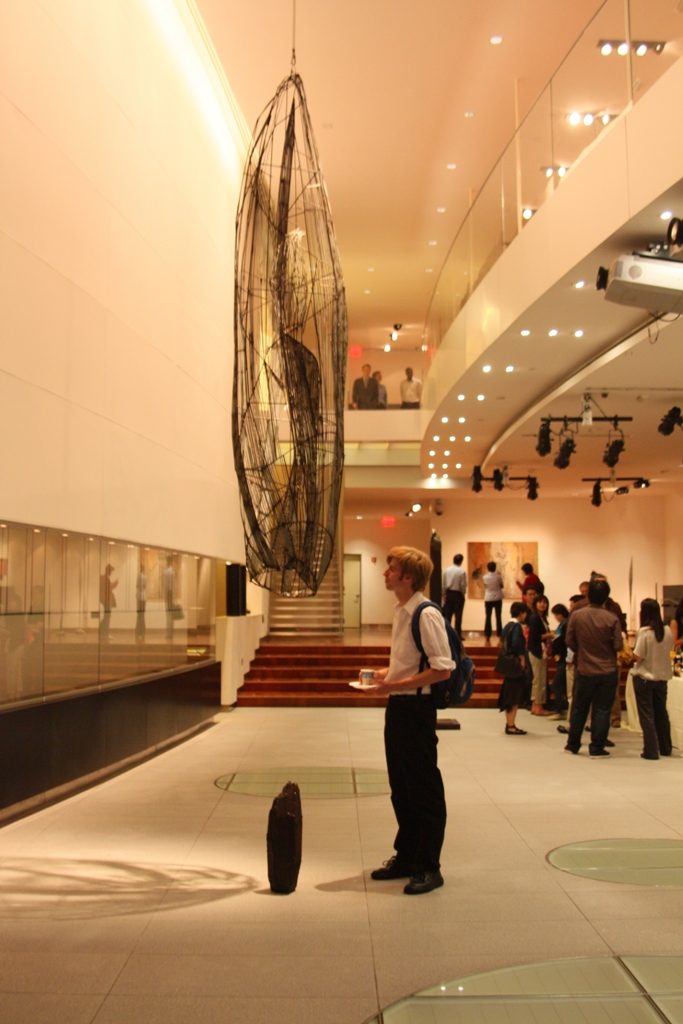
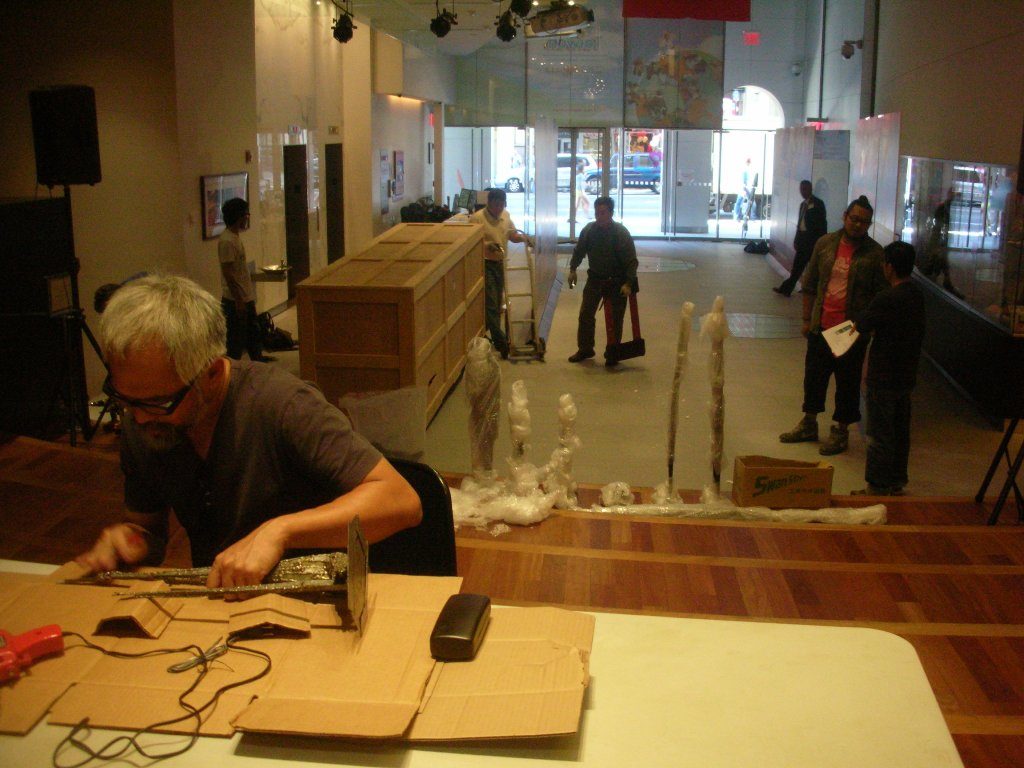
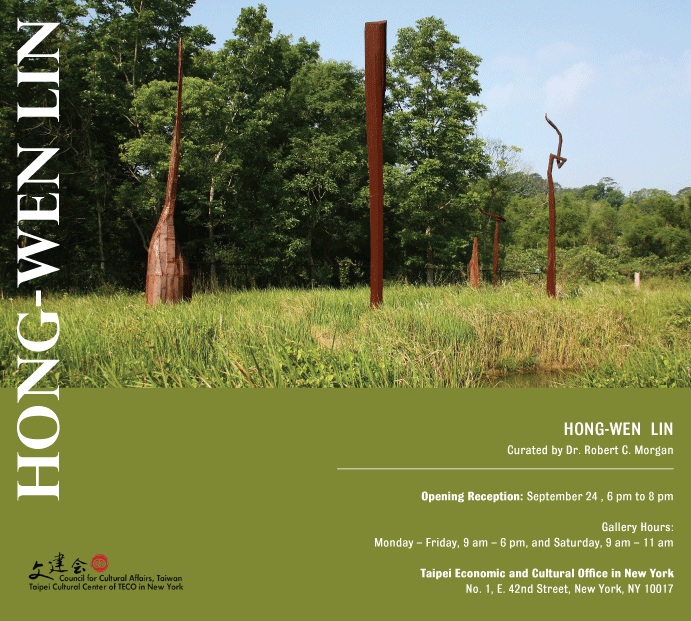
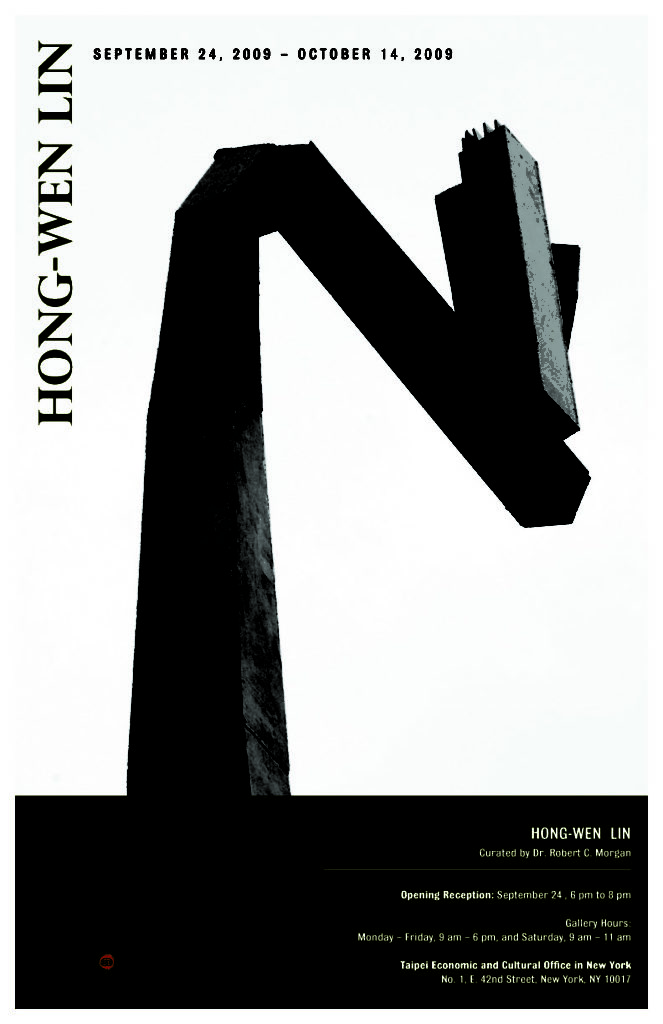
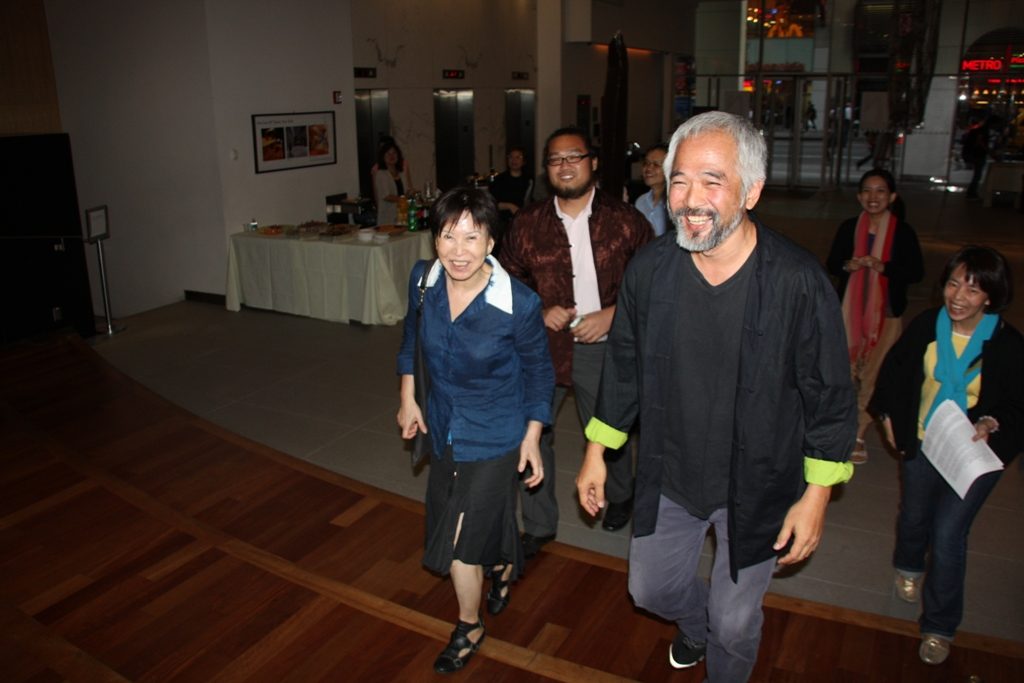
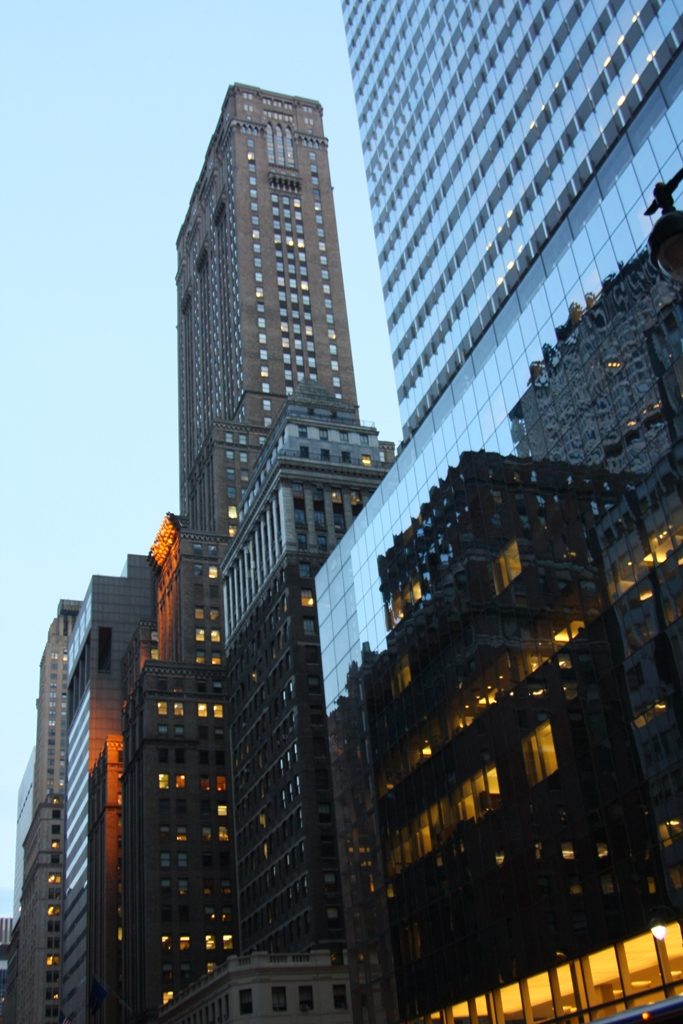
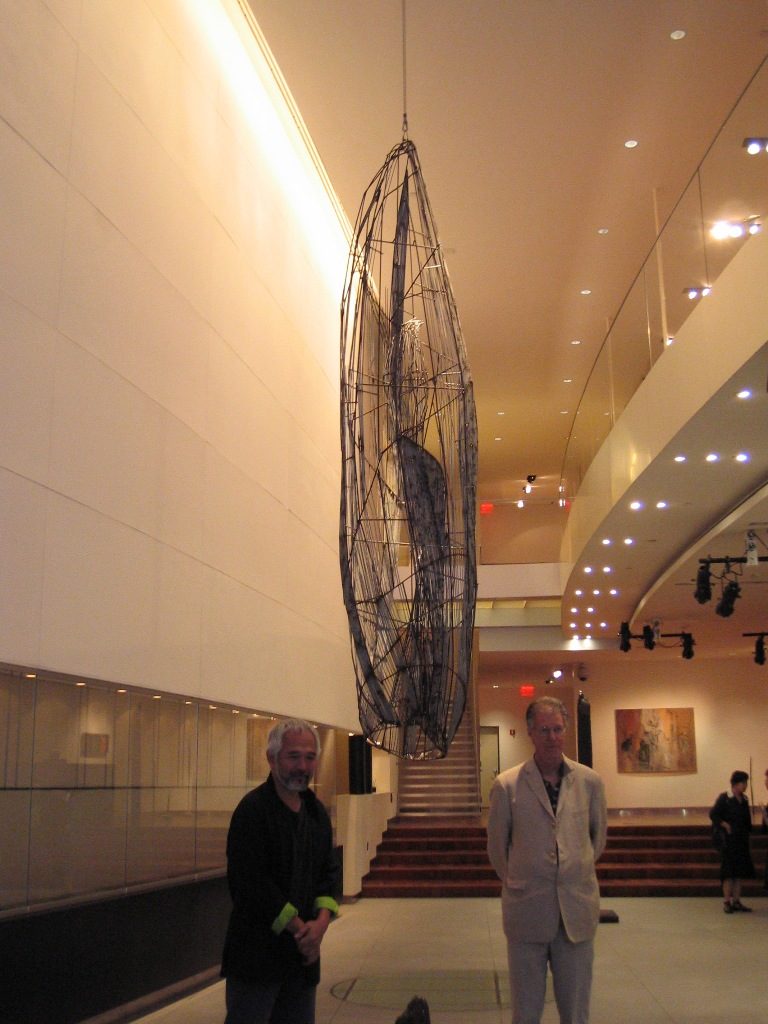
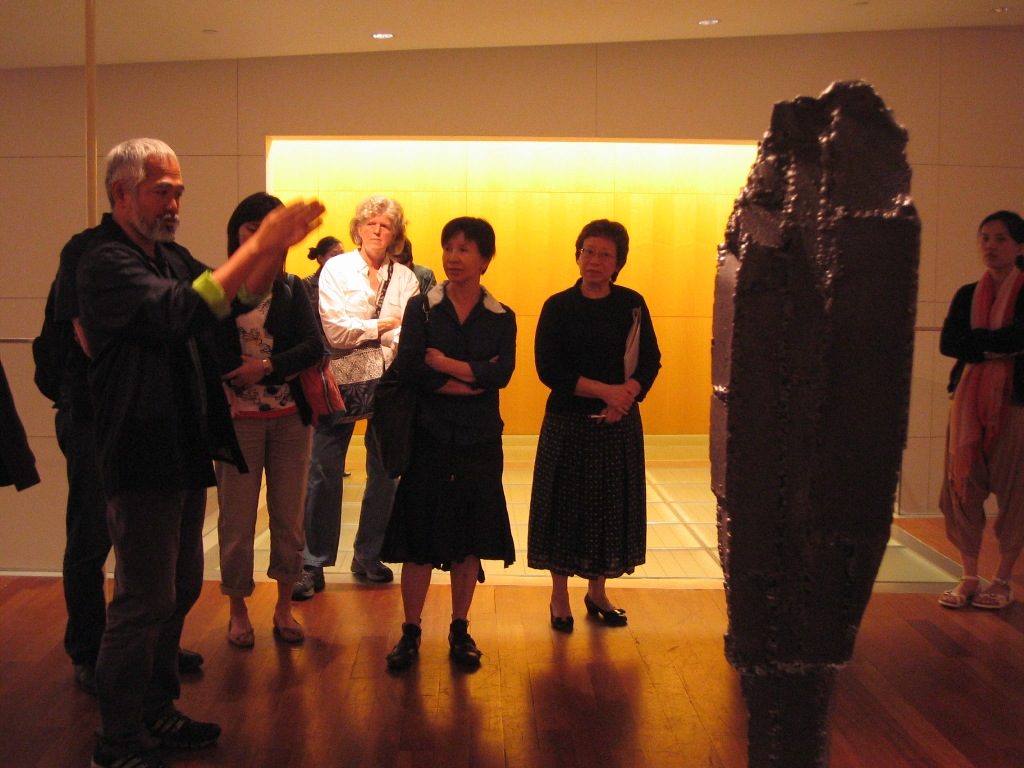
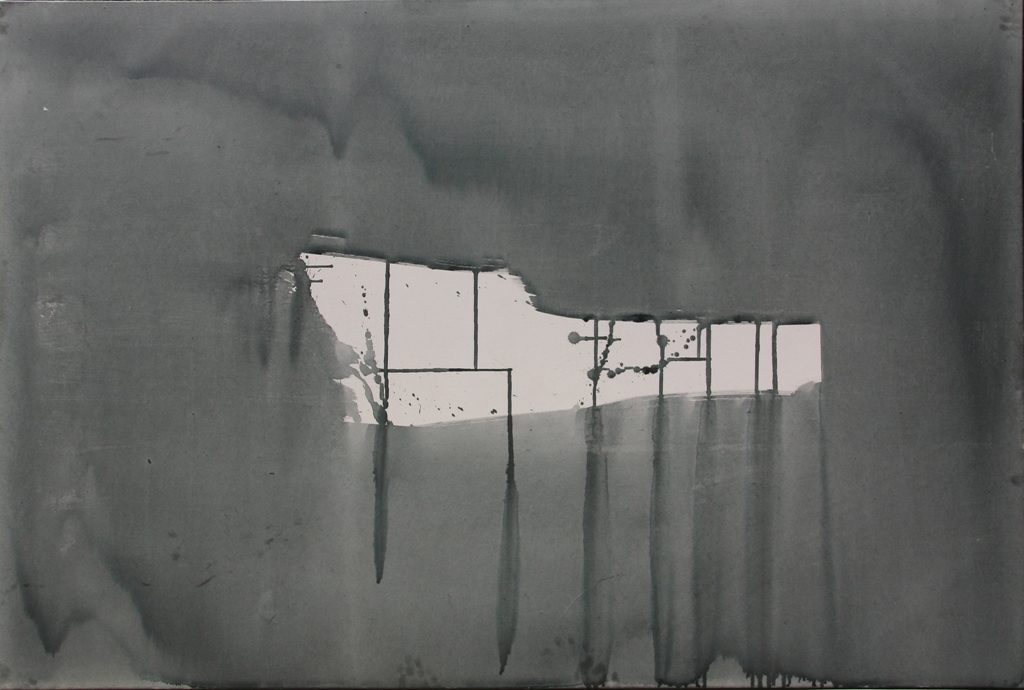
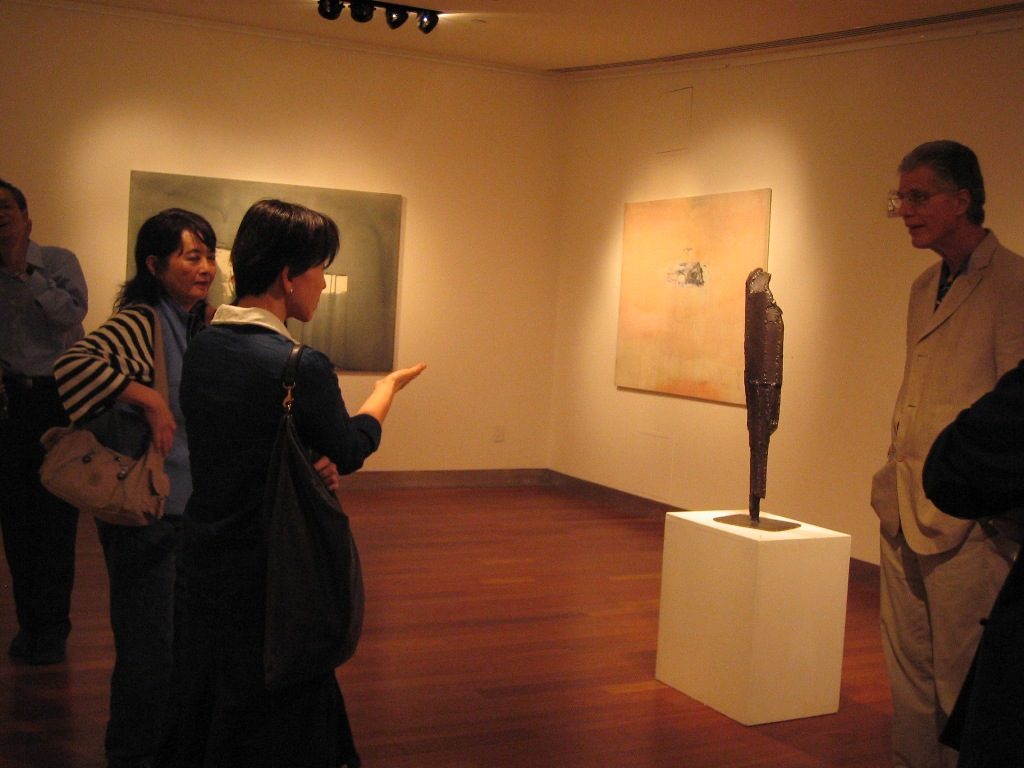
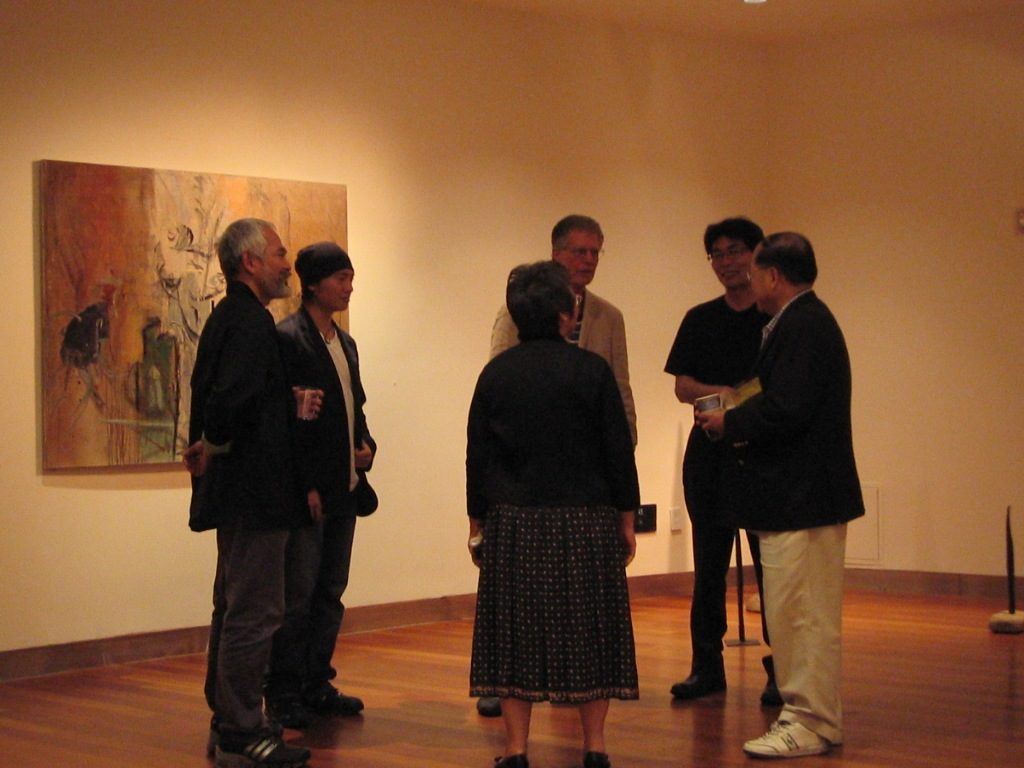
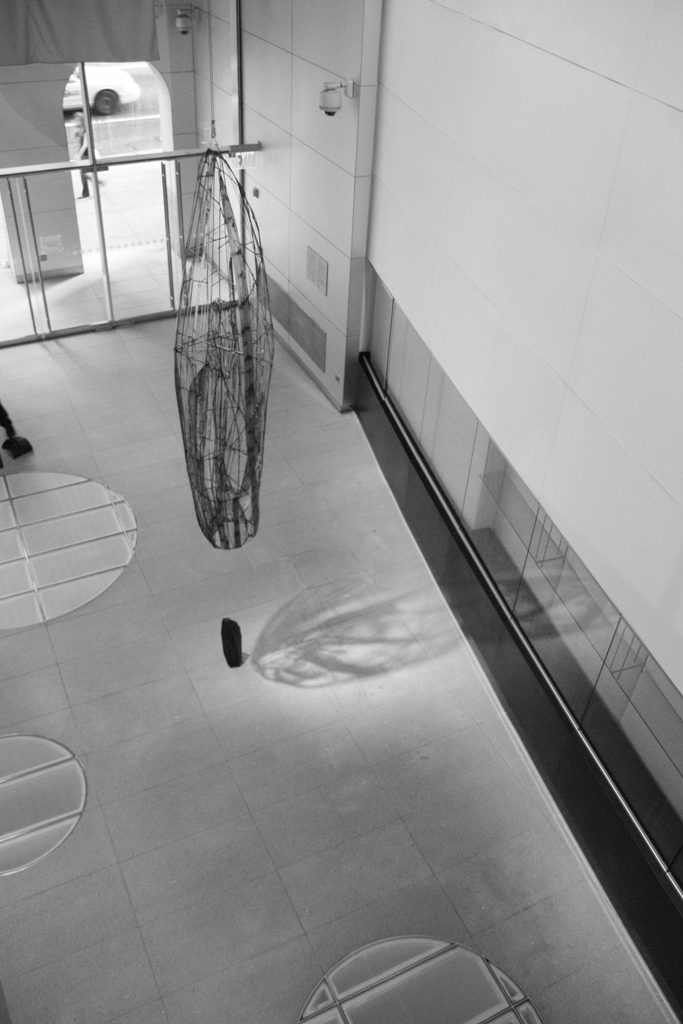
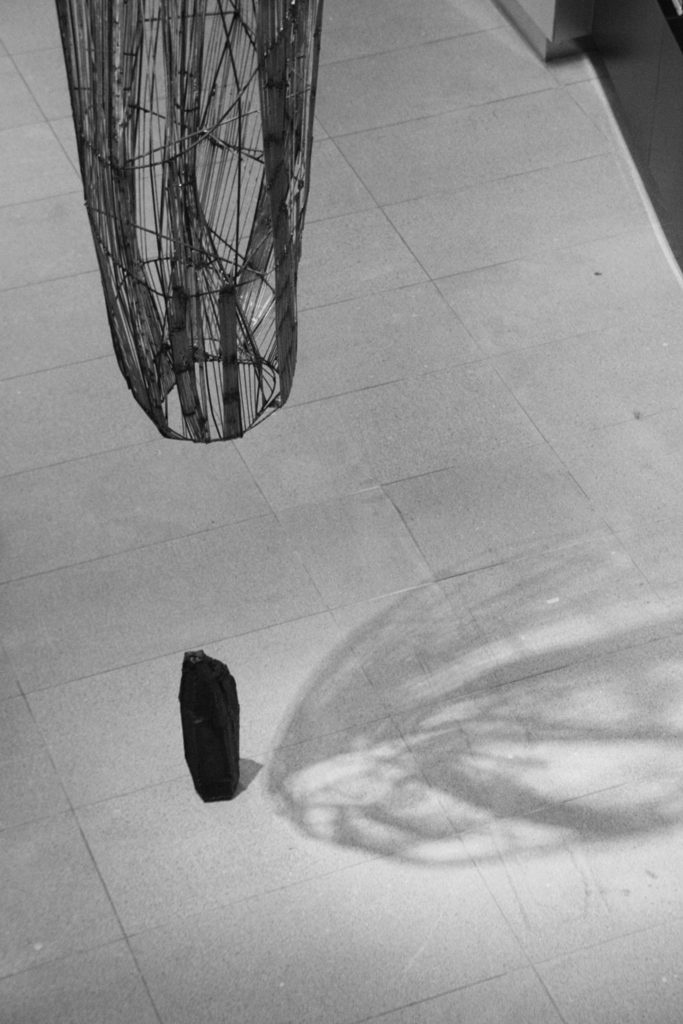
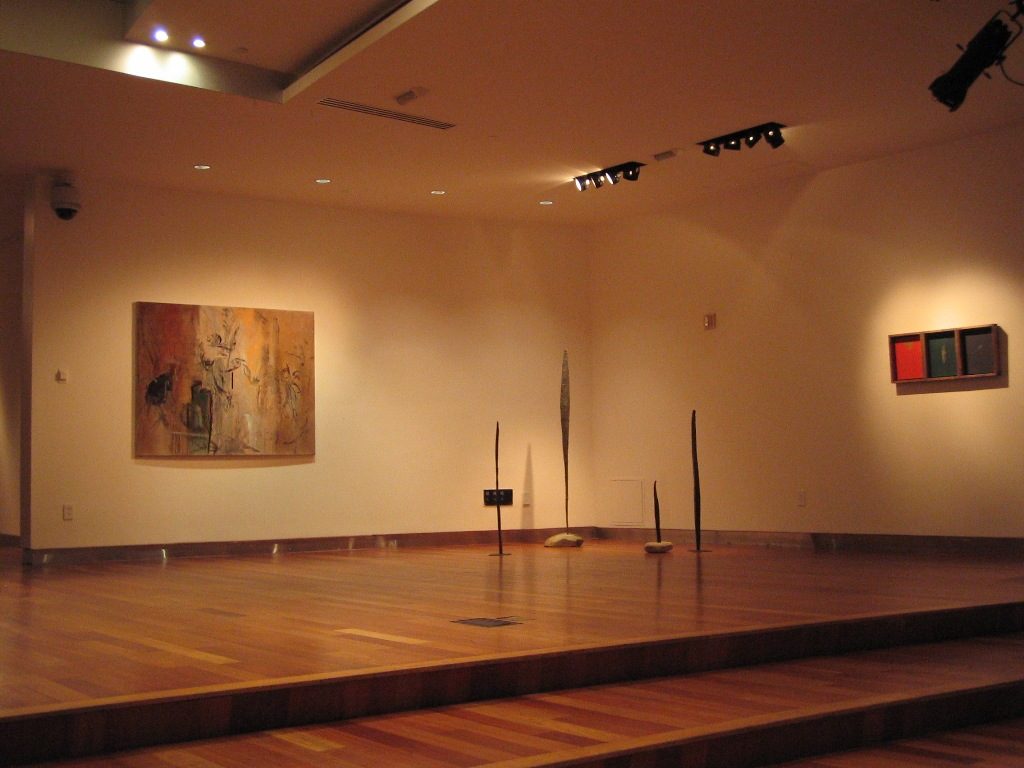
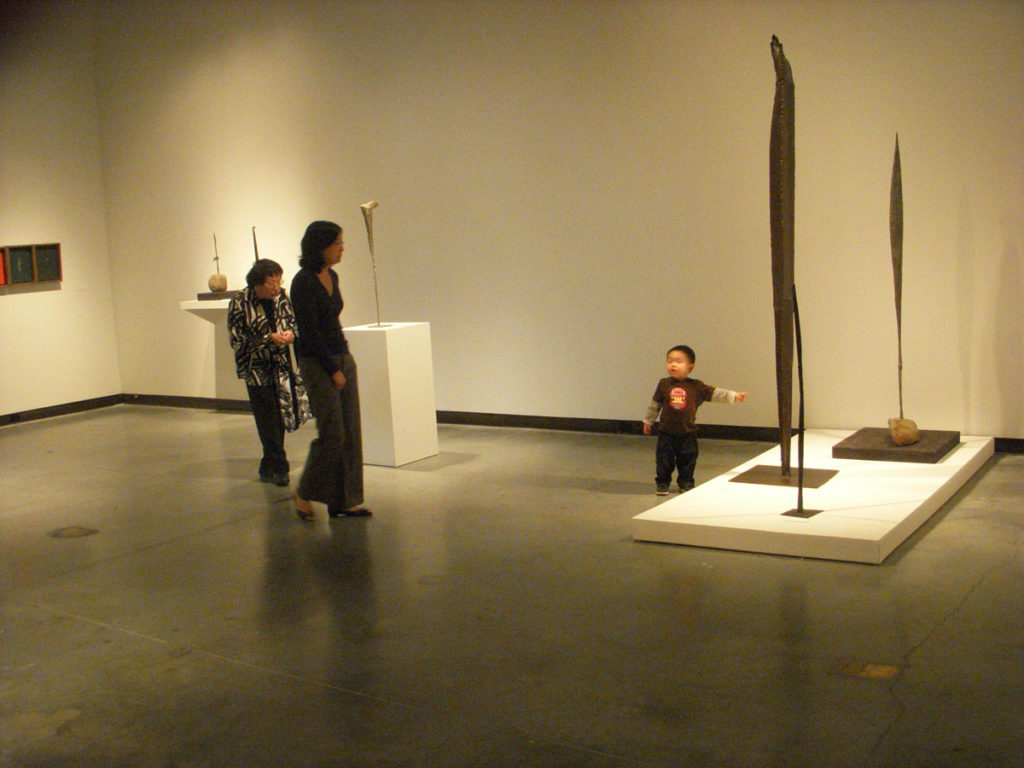
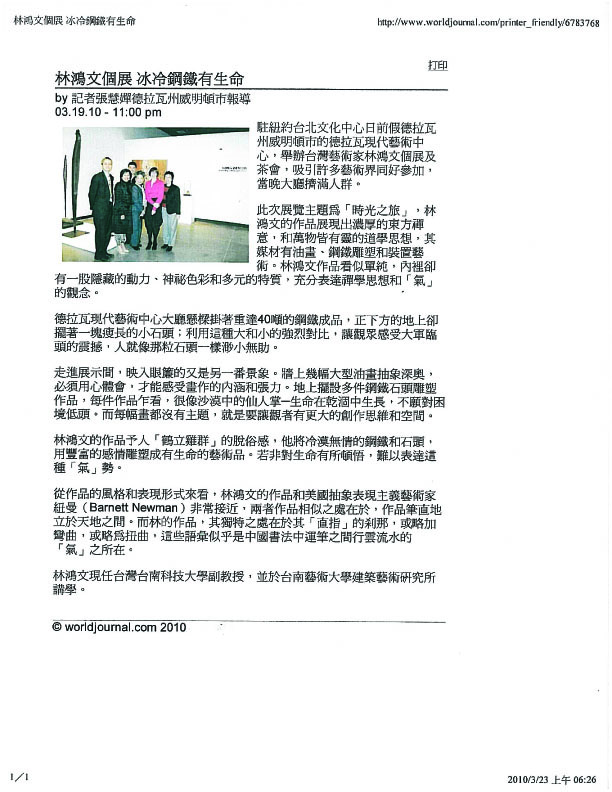
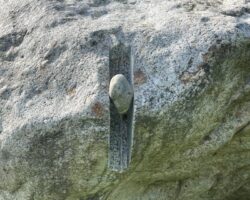
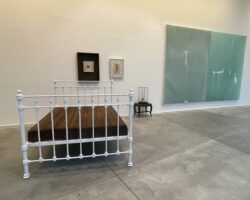
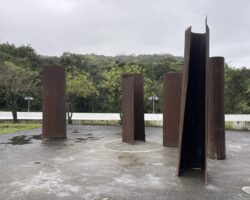
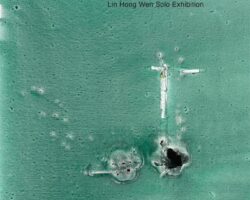
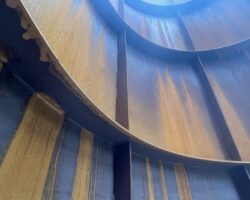

No Comments